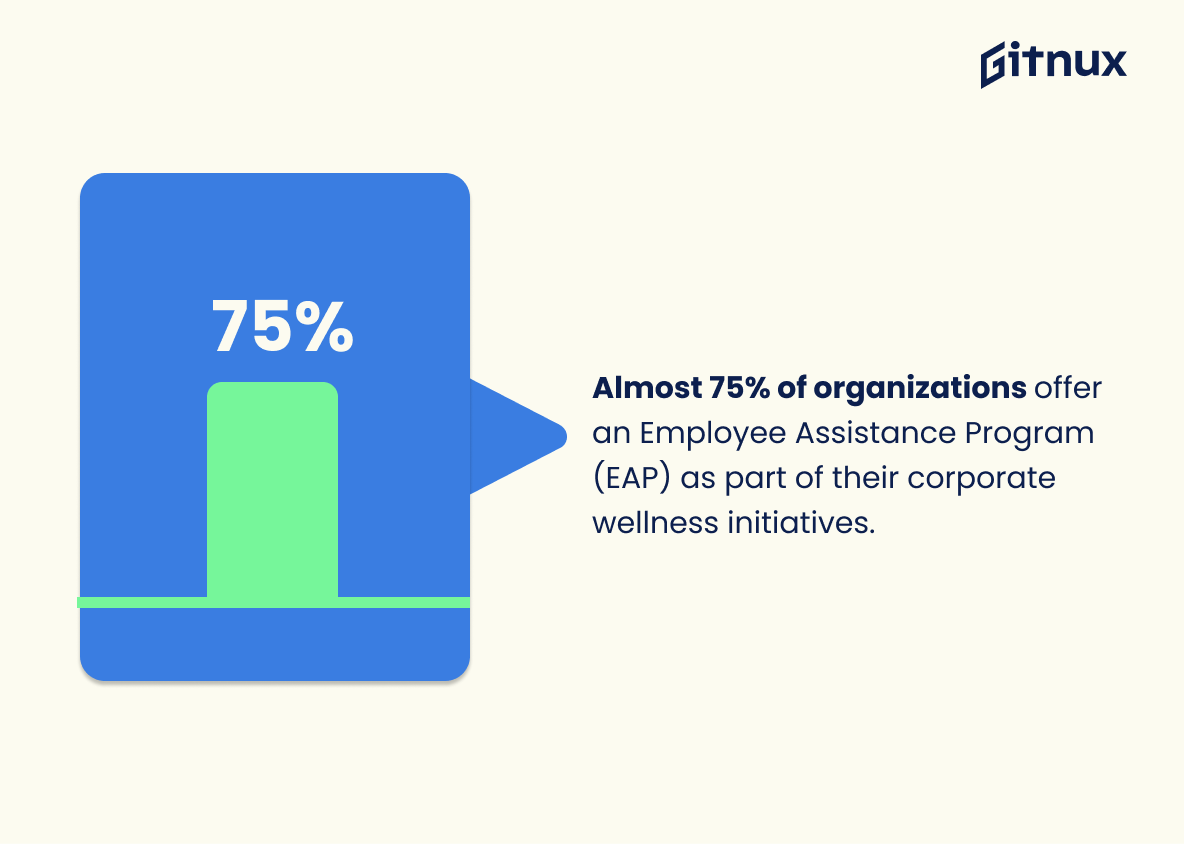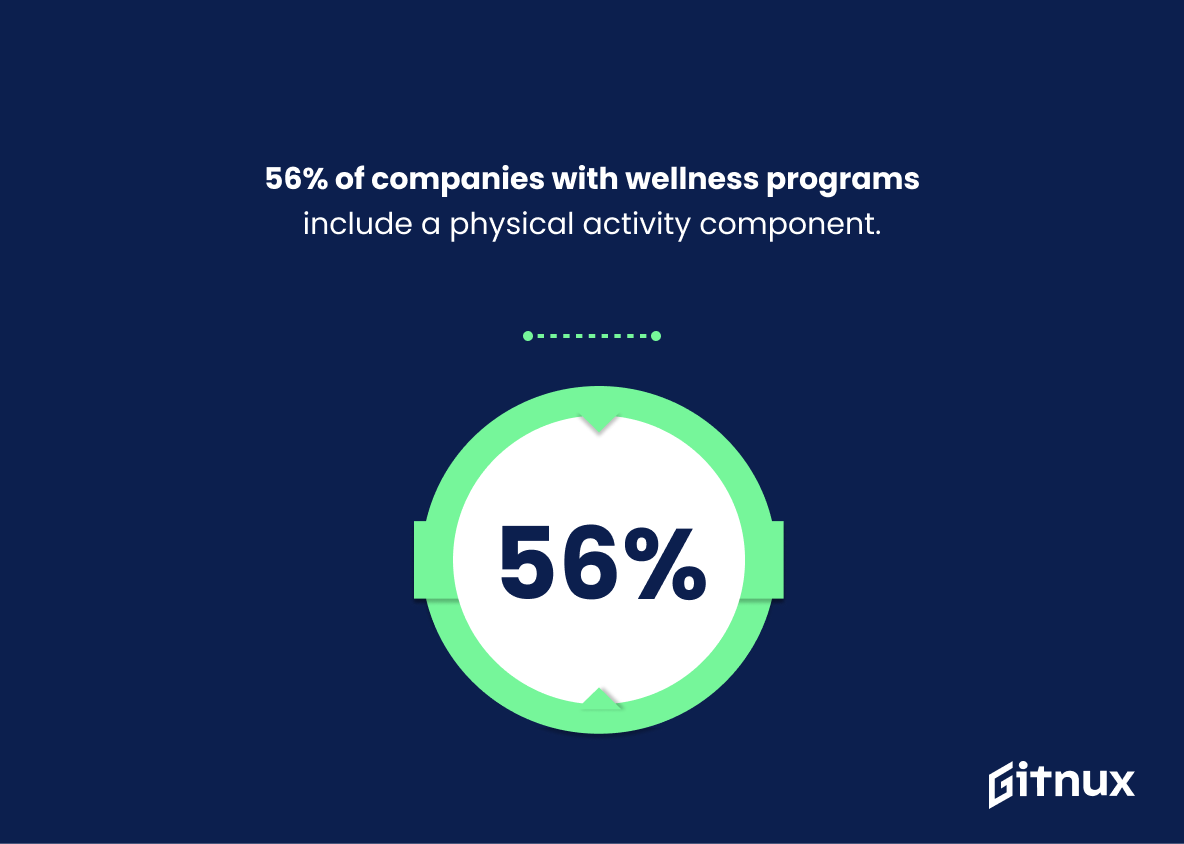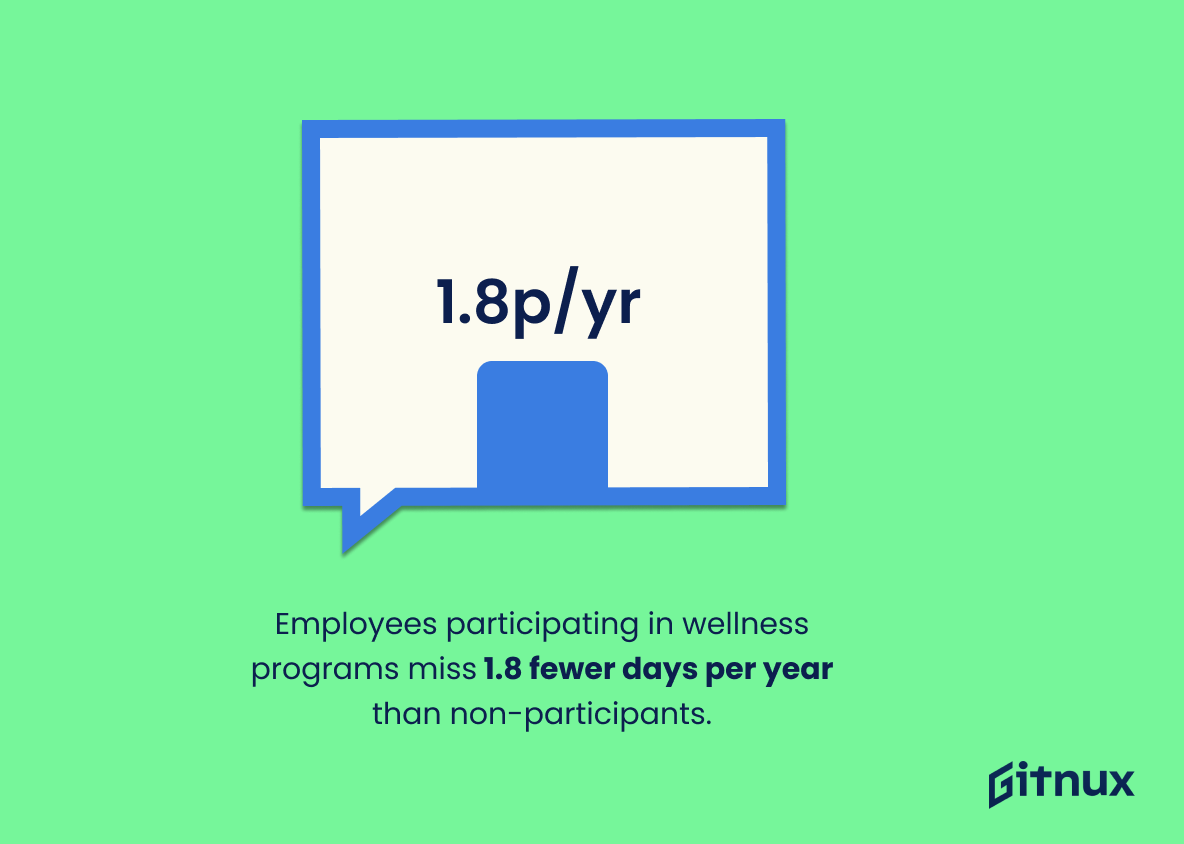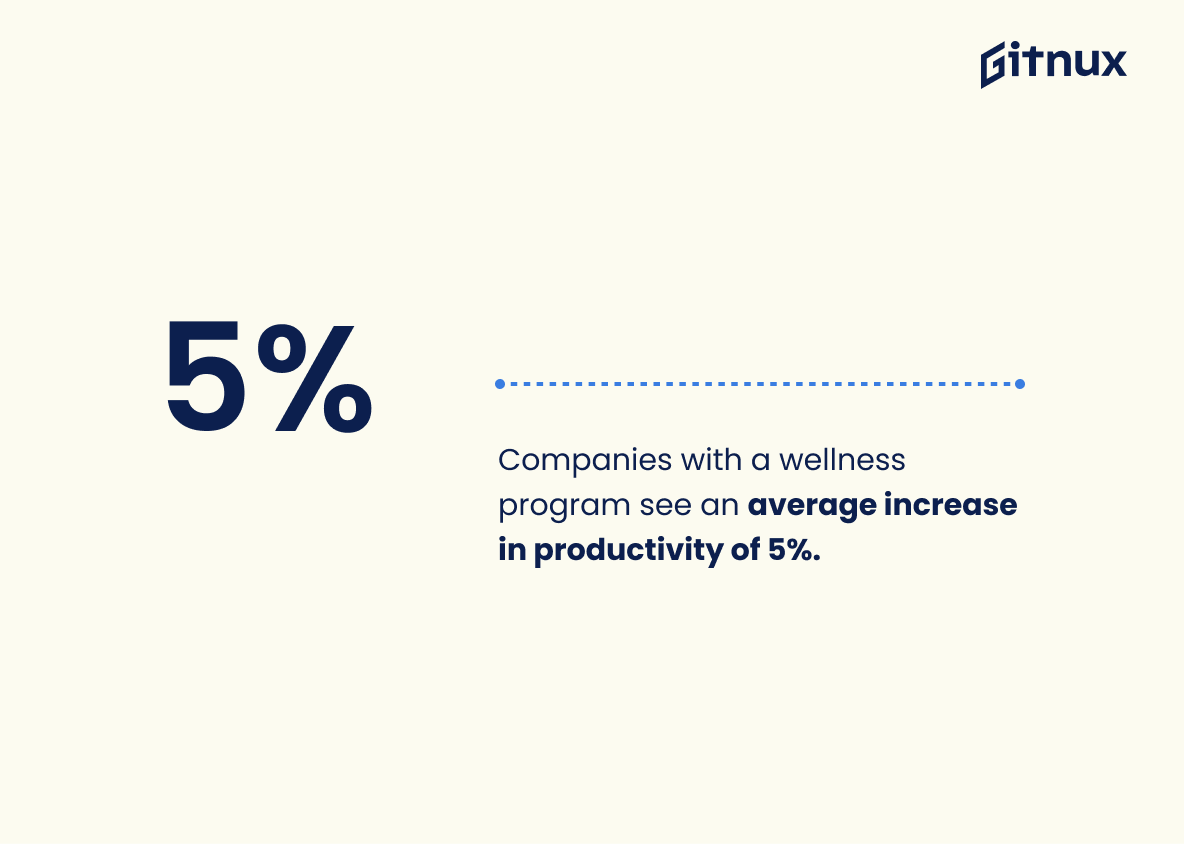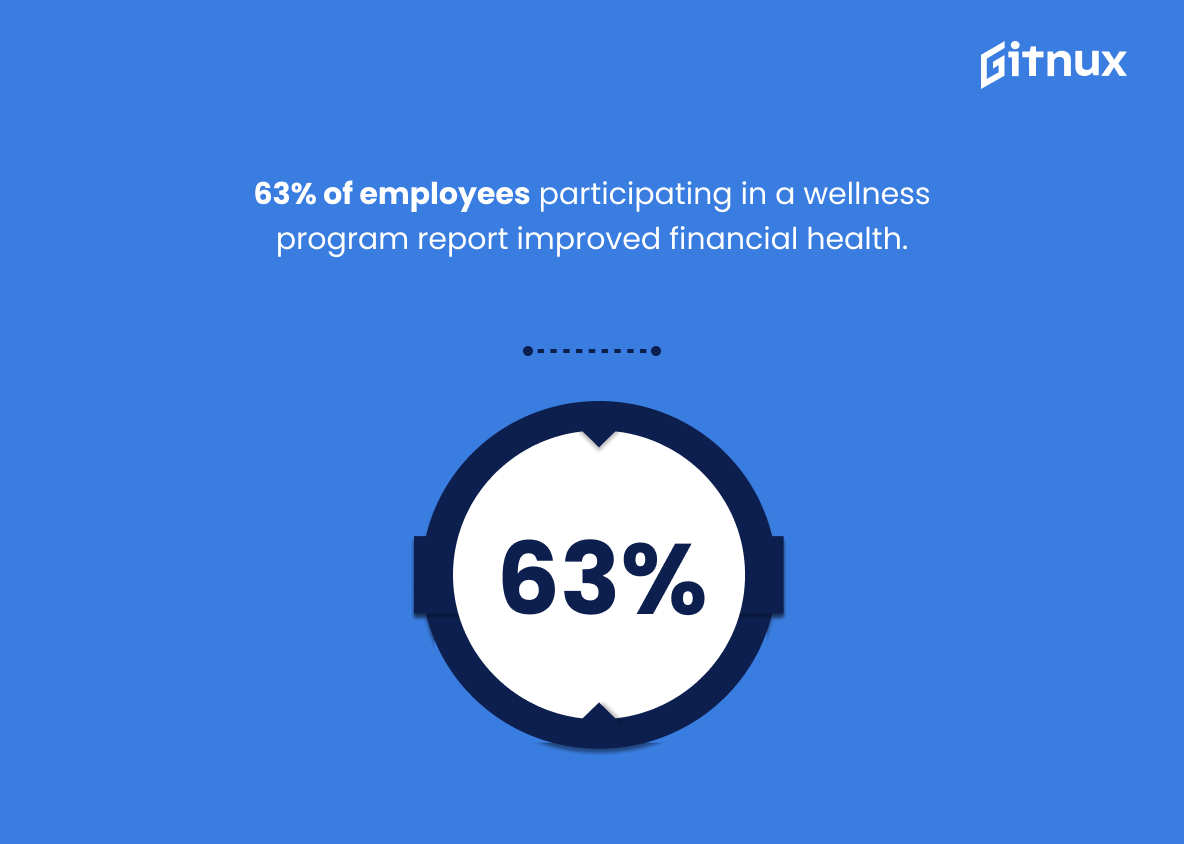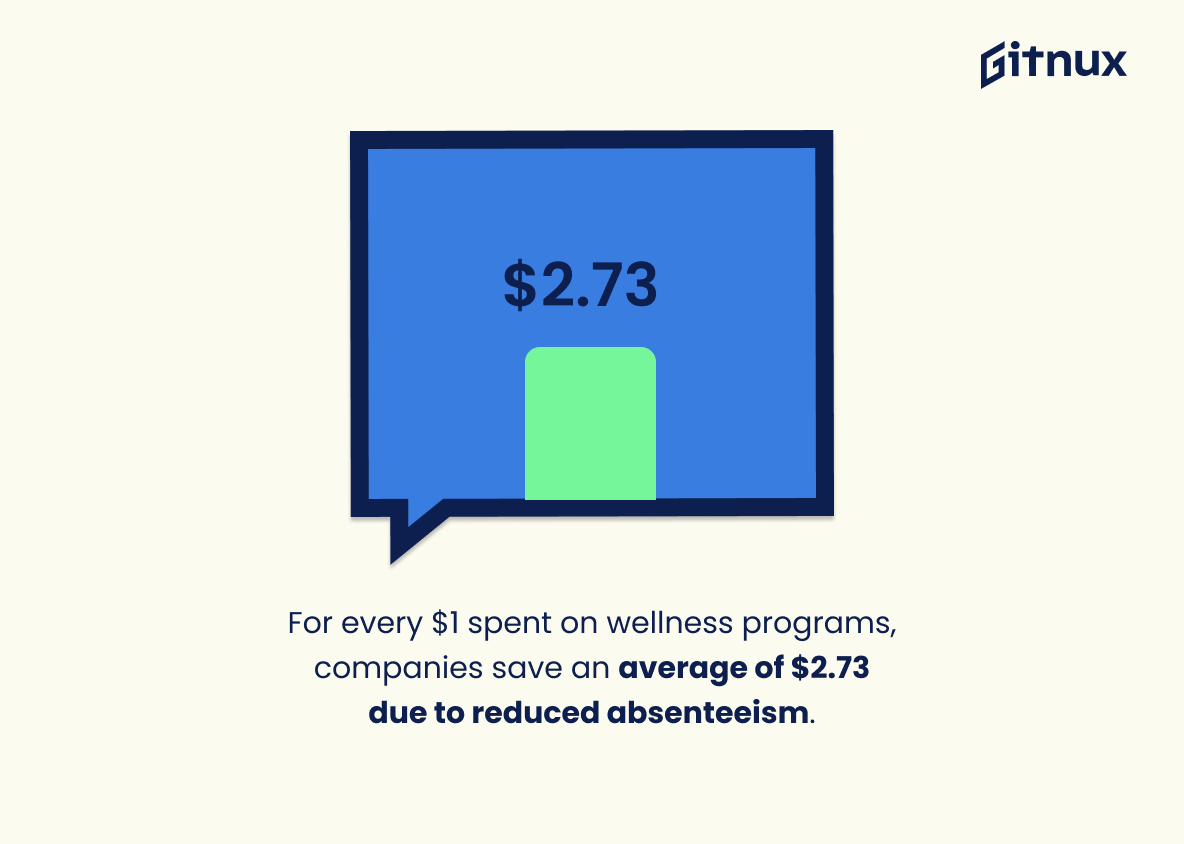Corporate wellness programs are becoming increasingly popular among employers and employees alike. With the right program in place, companies can see a range of benefits from improved employee health to reduced costs associated with absenteeism and disability management. To better understand how corporate wellness programs impact businesses, let’s take a look at some key statistics: Approximately 84% of U.S. employers offer a wellness program; however, only 54% of employees feel their workplace provides an adequate one. Participation in these initiatives can lead to 25% reduction in sick leave and disability management costs as well as $5.8 saved per healthcare dollar spent on average – resulting in an overall 3-to-1 return on investment for employers who invest in them.
The global corporate wellness market is expected to reach $97 billion by 2027 while 71% of employees consider such offerings when choosing an employer or deciding whether they should stay with their current company (61%). Additionally, almost 75% organizations provide Employee Assistance Programs (EAPs) as part of their corporate wellbeing strategies while 56%, 63%, 92%, 47%, 5%, 24 %and 6 %of companies include physical activity components , financial health improvements , smoking cessation resources , health risk assessments , productivity increases job satisfaction rate increase respectively . Finally, it has been found that those investing into workplace wellbeing experience 1.8 fewer days absent each year than non-participants – saving up to $2.73 for every dollar invested.
This statistic is a testament to the growing popularity of corporate wellness programs. It shows that the majority of employers in the U.S. recognize the importance of providing their employees with access to wellness programs, and are taking steps to ensure that their employees have the resources they need to stay healthy and productive.
Participation in corporate wellness programs can lead to a 25% reduction in sick leave and disability management costs.
This statistic is a powerful testament to the effectiveness of corporate wellness programs. It demonstrates that investing in such programs can lead to significant savings in sick leave and disability management costs, making them a worthwhile investment for any business. This is an important point to consider when discussing the value of corporate wellness programs, and it is a statistic that should not be overlooked.
Corporate Wellness Program Statistics Overview
The global corporate wellness market is expected to reach $97.4 billion by 2027.
This statistic is a testament to the growing importance of corporate wellness programs. It shows that businesses are increasingly recognizing the value of investing in the health and wellbeing of their employees. As the market continues to expand, it is clear that corporate wellness programs are becoming an integral part of the modern workplace.
71% of employees consider wellness offerings when choosing an employer.
This statistic is a testament to the importance of corporate wellness programs in the eyes of employees. It shows that the majority of employees prioritize wellness offerings when selecting an employer, indicating that these programs are a major factor in their decision-making process. This statistic is a powerful reminder of the value of corporate wellness programs and the impact they can have on employee satisfaction and retention.
Employers that invest in corporate wellness programs see a 3-to-1 return on investment through healthcare cost savings.
This statistic is a powerful testament to the value of corporate wellness programs. It demonstrates that employers who invest in these programs can expect to see a significant return on their investment in the form of healthcare cost savings. This is an important point to make in a blog post about Corporate Wellness Program Statistics, as it highlights the potential benefits of investing in such programs.
Almost 75% of organizations offer an Employee Assistance Program (EAP) as part of their corporate wellness initiatives.
This statistic is a testament to the importance of Employee Assistance Programs (EAPs) in corporate wellness initiatives. It shows that the majority of organizations recognize the value of providing their employees with access to mental health resources and support. This is a positive sign that organizations are taking steps to ensure their employees are supported in their overall wellbeing.
56% of companies with wellness programs include a physical activity component.
This statistic is indicative of the importance of physical activity in corporate wellness programs. It shows that the majority of companies recognize the value of physical activity in promoting employee health and well-being. This is an important statistic to consider when discussing the effectiveness of corporate wellness programs, as it demonstrates the commitment of companies to providing comprehensive wellness programs that include physical activity.
47% of corporate wellness programs offer health risk assessments for employees.
This statistic is indicative of the growing trend of corporate wellness programs offering health risk assessments for employees. It shows that companies are increasingly recognizing the importance of employee health and are taking steps to ensure that their employees are aware of any potential health risks they may face. This is an important step in promoting a healthy workplace and can help to reduce the risk of serious health issues in the future.
Employees participating in wellness programs miss 1.8 fewer days per year than non-participants.
This statistic is a powerful indicator of the effectiveness of corporate wellness programs. It shows that employees who participate in these programs are taking fewer days off, which can lead to increased productivity and improved morale in the workplace. This can have a positive impact on the bottom line of any business, as fewer days off means more time spent working and more money earned. Additionally, fewer days off can lead to improved health and wellbeing for employees, which can lead to a more positive work environment. All of these factors make this statistic an important one to consider when evaluating the success of corporate wellness programs.
Companies with a wellness program see an average increase in productivity of 5%.
This statistic is a powerful indicator of the effectiveness of corporate wellness programs. It shows that investing in a wellness program can have a tangible, positive impact on productivity. This is an important point to make in a blog post about corporate wellness program statistics, as it demonstrates the value of such programs and encourages businesses to consider investing in them.
Over a three-year period, companies investing in employee wellness programs experienced a 24% decrease in disability and workers’ compensation expenses.
This statistic is a powerful testament to the effectiveness of corporate wellness programs. It shows that investing in employee wellness can have a tangible, positive impact on a company’s bottom line. By reducing disability and workers’ compensation expenses, companies can save money and improve their overall financial health. This is an important statistic to consider when evaluating the potential benefits of a corporate wellness program.
63% of employees participating in a wellness program report improved financial health.
This statistic is a powerful testament to the effectiveness of corporate wellness programs. It shows that when employees are given the opportunity to participate in a wellness program, they are more likely to experience improved financial health. This is an important finding, as it demonstrates that corporate wellness programs can have a positive impact on employees’ financial wellbeing. This statistic is a great example of how corporate wellness programs can be beneficial to both employers and employees.
Corporate wellness programs have a 6% higher job satisfaction rate among employees.
This statistic is a testament to the effectiveness of corporate wellness programs in improving job satisfaction among employees. It shows that investing in such programs can have a positive impact on employee morale and productivity. This is an important point to consider when discussing the value of corporate wellness programs, as it demonstrates that they can have a tangible effect on employee satisfaction.
For every $1 spent on wellness programs, companies save an average of $2.73 due to reduced absenteeism.
This statistic is a powerful testament to the effectiveness of corporate wellness programs. It demonstrates that investing in wellness initiatives can have a significant impact on reducing absenteeism, resulting in a substantial return on investment. This is an important point to consider when evaluating the value of corporate wellness programs.
Conclusion
The statistics presented in this blog post demonstrate the numerous benefits of corporate wellness programs. From improved job satisfaction and financial health to reduced absenteeism, stress levels, and healthcare costs, it is clear that investing in a comprehensive workplace wellness program can have far-reaching positive impacts for both employers and employees alike. With an expected global market value of $97.4 billion by 2027, there has never been a better time to invest in employee wellbeing initiatives.
References
0. – https://www.corehealth.global
1. – https://www.rwjf.org
2. – https://www.optum.com
3. – https://www.cdc.gov
4. – https://www.grandviewresearch.com
5. – https://www.rand.org
6. – https://www.ifebp.org
7. – https://www.umassmed.edu
8. – https://www.jumpstartmd.com
9. – https://www.helloworkwell.com
10. – https://www.shrm.org
11. – https://www.hbr.org
12. – https://www.ahip.org
13. – https://www.sochealth.co.uk



